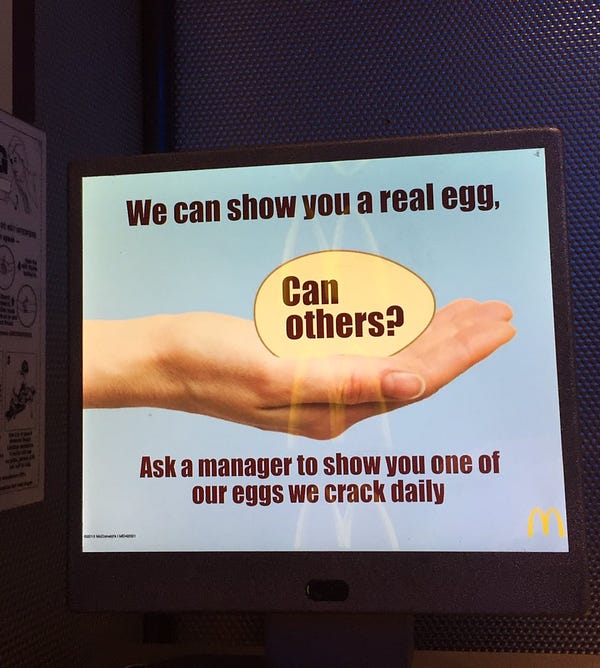Why I Fell for Fermentation | One Word ... Plastics | Recipe: Pasta Bowl of Champions
Issue No. 15
In this week’s Sunshine + Microbes, we prepare for FL Ferment Fest 2019(!!), learn how industry has gaslighted society about plastic pollution, and dig into a big ass bowl of pasta with a lemon-miso-cream sauce.
If you enjoyed this newsletter, please forward it to friends (and give our Facebook and Instagram pages a follow 😎). And if someone shared this newsletter with you, subscribe below.

As a teenager, I had a life-changing conversation in my friend Colin’s yurt.
We were graduating from high school, and thinking about the future. Colin wanted to learn to grow his own food to provide for himself and his loved ones during the forthcoming societal collapse (he may or may not have been high that afternoon). As we sat there in 2005, probably listening to the Grateful Dead, the future feeling so uncertain, that struck me as a really good idea. Next summer I went off to learn about food production. I baked my first loaves of sourdough while wwoofing on a farm in Normandy.
Fifteen years after that initial rendezvous with fermentation, I co-organize a whole festival dedicated to it. The third annual FL Ferment Fest is a month away on Sunday, Nov. 10 in St Petersburg. This year we’re bringing fermentation educators extraordinaire Kirsten and Christopher Shockey of FermentWorks, along with amazing teachers and producers from across the state. You should definitely come!
My friend Micah’s super cool big sis Kayleen sent me this gorgeous article on the resurgence of fermentation. It made me think about what attracts me to this alchemical practice. I’m no longer concerned with building my end times skill-set, but I’m committed to the value of food production all the same. Here are my top three reasons to take up fermentation.
😋Because it’s delicious. Fermented foods are good for you, but I don’t believe in doing anything solely for health. Case in point: my short-lived running habit. No thank you. I know people that think of food purely as a means to an end- fuel for the body and nothing more. I am not one of those people.
Eating is one of my greatest pleasures, and I have no time for food that is just so-so. For my particular palate, fermented foods scratch every itch. Plants may crave Brawndo, but I crave cheese, and sourdough bread, and chocolate and miso and vinegar and olives. In today’s monoculture of mass-produced, bland flavors and indistinguishable variations on a theme of corn and soy, fermented foods provide that salty-acid-funky punch that make a meal exceptional. And we all deserve to eat something exceptional.
🌐To tap into our shared humanity. Humans first separated themselves from animals by transforming their food through cooking. One of the earliest methods of transformation was fermentation in the form of alcohol. Early humans loved boozin!). It’s grounding to think that just four or five generations back, and for millennia before then, my Italian peasant foremothers were collecting and brining olives, brewing wine, and making mozzarella, and now, across an ocean and over a hundred years later, I’m still doing that same slow, challenging, fulfilling work. I feel connected to and embraced by that long line of humans working hard to feed their communities. That seems like a tradition worth maintaining.
🙏Because meditation. Last winter, in the midst of a good old fashioned bout of depression, I got into an amazing relationship - with a really good therapist. She was a godsend. One of the greatest things I did for myself at her behest was start a meditation practice. And while I love the Calm app, I do most of my meditating in the kitchen. The repetitive tasks that are a part of fermentation (kneading dough for bread, peeling garlic for pickling, stirring a pot of milk for cheese, dehulling beans for tempeh) are a perfect opportunity to slow down, breathe, and focus on the present task in front of me. The result of all that mindful work - which requires another exercise in patience - will be worth the wait.
I hope you’re feeling inspired to ferment something. And for the next few weeks, I’ll be not-so-subtly plugging the festival (did I mention tickets are on sale now?) with fun fermentation content.
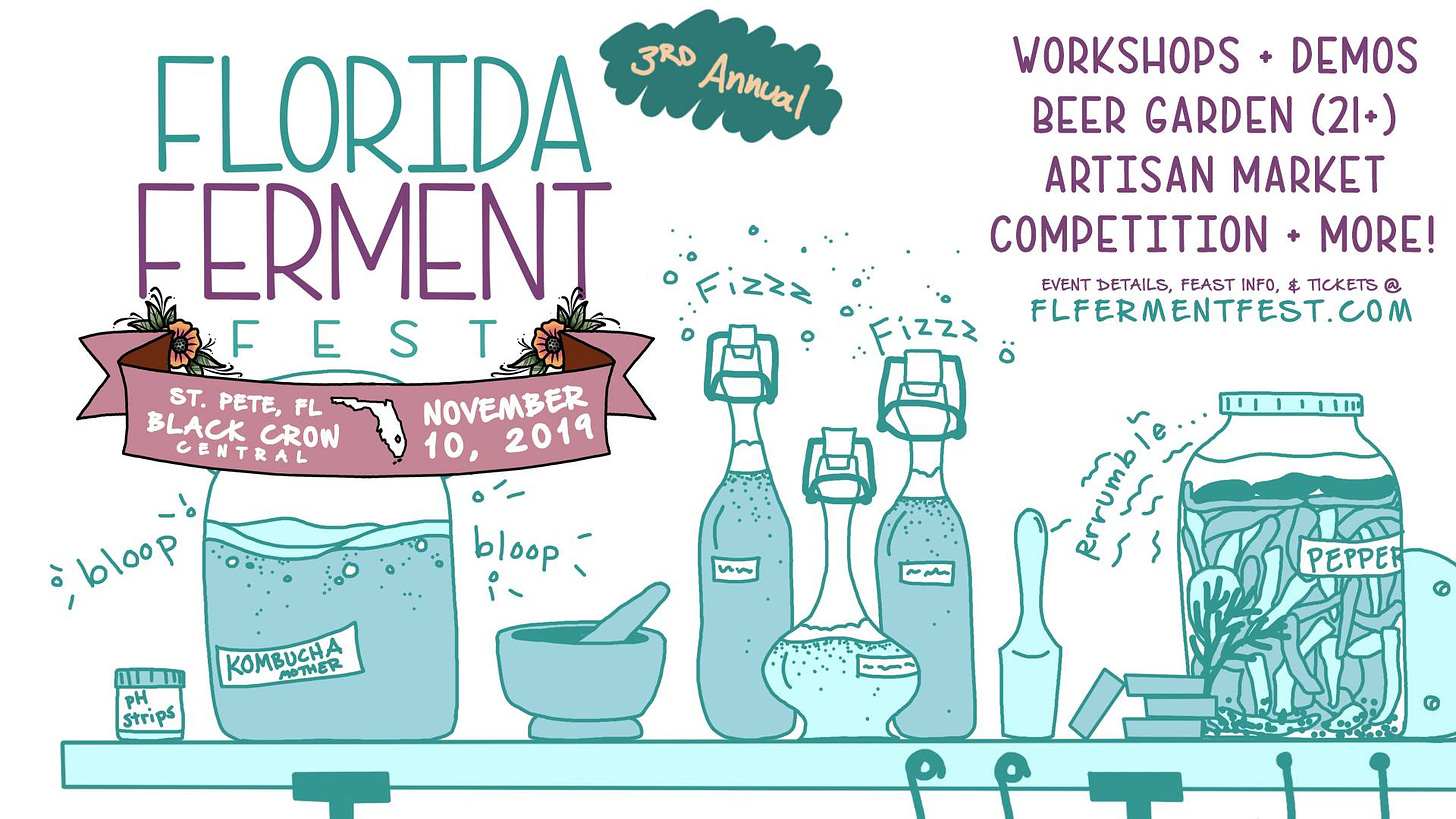
love,
Jackie

Watch This 👀
The Plastic Industry’s Long Fight to Blame Pollution on You - The Intercept
Like racism, poverty, and so many other social ills, climate change is a systemic problem. However, it’s often sold to us as an issue of personal responsibility. In her piece about the plastics industry, Sharon Lerner investigates the lengths to which polluting industries will go to create that illusion, shifting the blame off their own toxic practices and onto the individuals trapped in the wake of their wasteful system.
This short documentary is a companion piece to the longform article she wrote on the subject in July.
Earth, in pictures
On Indigenous Peoples Day, Vogue published an interview with indigenous leaders who fight against the extractivist practices damaging their lands and killing the Amazon rainforest. The organization Amazon Frontlines has helped them tell their stories to a wider audience. Around the world, indigenous people are leading the climate justice movement.



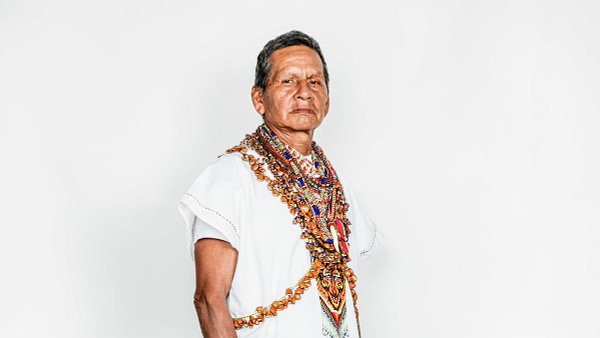

Fresh Links
Our favorite food and environment reads from around the internet. Give’em a click👇
🌾The Land of Our Fathers, Parts One and Two | 1619, The Daily
Part 1 and Part 2
Listen to this two-part episode from the 1619 audio series, which is part of the New York Times’ sprawling examination of the legacy of slavery, 400 years after the first slave ships landed on these shores. The podcast is a moving and painful investigation of how that legacy impacts black farmers. It tells the story of June and Angie Provost, two ambitious and successful black sugarcane farmers whose world is turned upside down by the all-too-tangible effects of institutional racism. Their story captures just how far away we are from the promise of 40 acres and a mule, and the active role that financial institutions and our own government have had in keeping African Americans from land ownership.
⛪Seeking Salvation in Salisbury Steak | Food & Wine
How an inescapable, heinous dish served with “the onions and gravy on a plastic tray” reminds writer John Paul Brammer about his childhood and suffering.

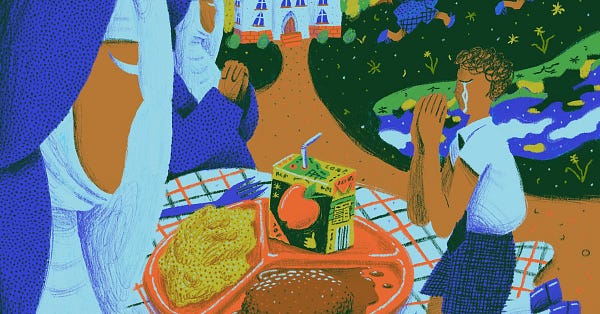
🍲My Harabeoji Taught Me It’s Always Better to Add More Garlic | Catapult
Noah Cho writes a column for Catapult magazine called Bad Kimchi, where he expounds on the ties between food, cooking and identity. In this latest article, Cho recalled his harabeoji, or grandfather. He had a harrowing and captivating life — surviving the Korean War and later moving to the United States with his family and getting featured in a tabloid for providing acupuncture for Elvis — and also an affinity for garlic, a staple of Korean cooking.
He was also a slow eater, harabeoji; he contemplated every bite—a trait that became even more pronounced as he grew older and frailer due to Parkinson’s. I remember chopsticks and forks trembling in his hands as food made its way to his mouth. Harabeoji’s favorite thing to eat, and the thing to which he attributed his long life, was raw garlic. You could smell him coming before he entered the room; his morning routine, after washing up and dressing, concluded with two cloves of garlic, whole, chewed up in his mouth. My very earliest memories of harabeoji are not the distinct visions of him, strong but thin, with hands that seemed like they could bend steel—no, my memories of him consist of the pungent, visceral smell of raw garlic.
Even though Cho’s harabeoji never cooked, his love of garlic still had an effect on his grandson’s own cooking.

Fettuccine with Roasted Mushrooms in Lemon-Miso-Cream Sauce
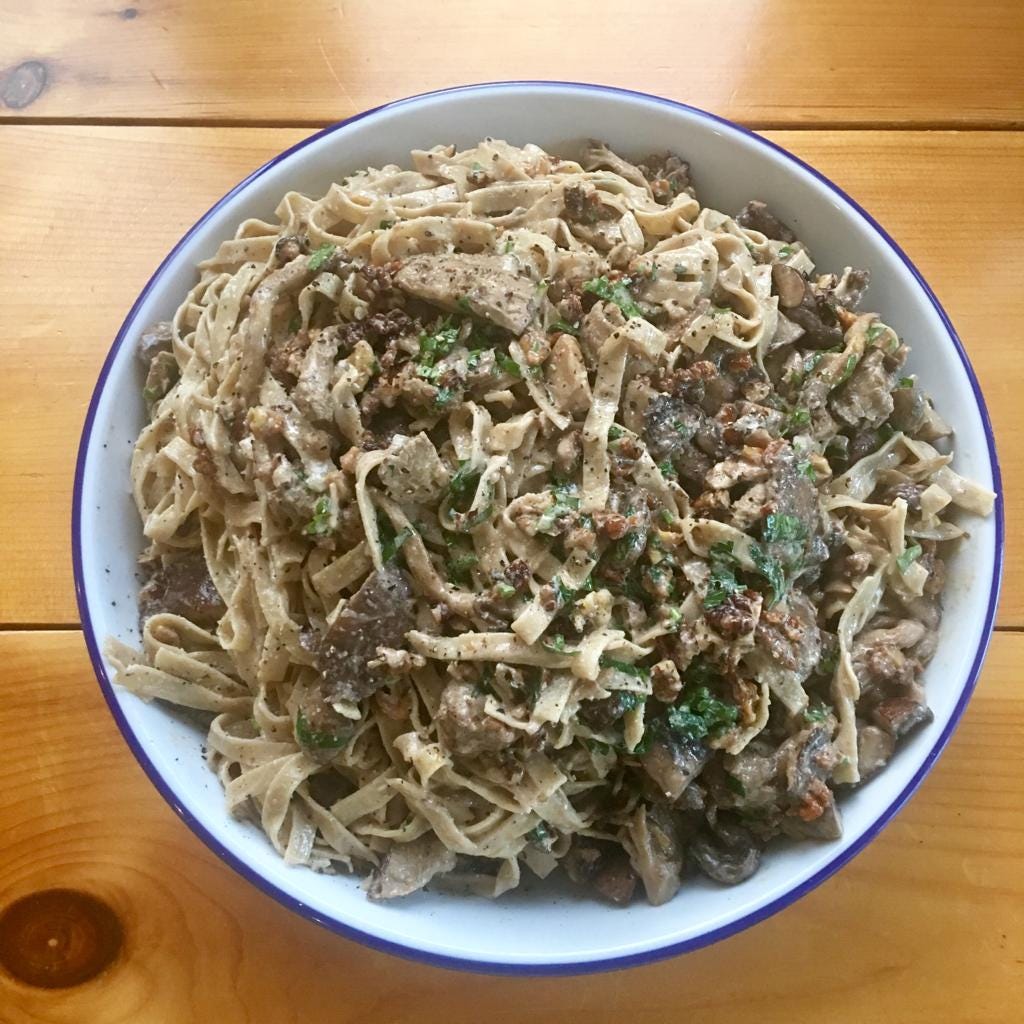
My dream career would be running a restaurant in which I make one giant bowl of pasta for a dozen or so people four nights a week. While there may be a few financial holes in that particular vision for my future, I must say that I truly excel at making big bowls of pasta. It’s the nonna in me!
This particular bowl of pasta is a dream. It’s got all kinds of umami (the fifth taste, which captures savoriness) - featuring darkly roasted mushrooms, garlic, miso, and a healthy shaving of parmesan. Buon appetito!
Ingredients (serves 3-4)
1 lb pasta
1 lb mixed mushrooms
1/2 cup roughly chopped walnuts (toast in oven at 350 for 12 minutes for extra deliciousness)
Small bunch of parsley, roughly chopped
Zest and juice of one lemon
2-3 garlic cloves, finely minced
2 tablespoons miso
3/4 cup heavy cream
a couple tablespoons of butter
Salt and pepper to taste
Parmesan for grating
Olive oil
Step-by-step
Prepare mushrooms. Preheat oven as high as it will go. Quarter the mushrooms and toss with a healthy glug or three of olive oil, salt, and pepper. Roast in the oven until brown and a bit crispy, about 15-20 minutes. To amplify the flavor, mix with a splash of lemon juice once roasted.
Cook pasta. I recommend amply salting the water (Samin Nosrat says it should taste like the ocean) to properly flavor the pasta. Before draining, reserve 1/4 cup of the starchy pasta water.
While pasta is cooking, make the sauce. Heat a large sauté pan — enough to eventually hold all the pasta — on medium. Add the butter, and once melted, add the heavy cream. Once the cream comes to a boil, lower heat and add garlic and miso. Season as needed with salt and pepper. Add the lemon juice, zest, and reserved pasta water to the cream sauce. The pasta water’s starchy goodness will give the sauce its body and help it stick to the pasta. Taste once more and adjust seasoning.
Return heat to medium, add drained pasta to sauté pan, and mix for about two minutes, so the pasta absorbs the flavors of the sauce.
Toss pasta with mushrooms, walnuts, and parsley, and top with a healthy amount of freshly shaved parmesan.

Can I offer you an egg in these trying times?
Talk to Us
Send in your comments, mailbag questions, recipe mishaps, or cooking tips: sunshineandmicrobes@gmail.com. Also do us a favor and follow us on Facebook and Instagram.
If you enjoyed this email, please share it with others. If someone forwarded this to you, click the button to sign up:
-------------------------------------------------------------------------------------------------
Sunshine + Microbes team
Jackie Vitale is the current Chef-in-Residence at the Robert Rauschenberg Foundation and co-founder of the Florida Ferment Fest. Her newsletter explores the intersection of food, culture, environment and community.
Matt Levin is a freelance reporter based in Colombia. He edits Sunshine + Microbes and contributes other scraps to each issue




